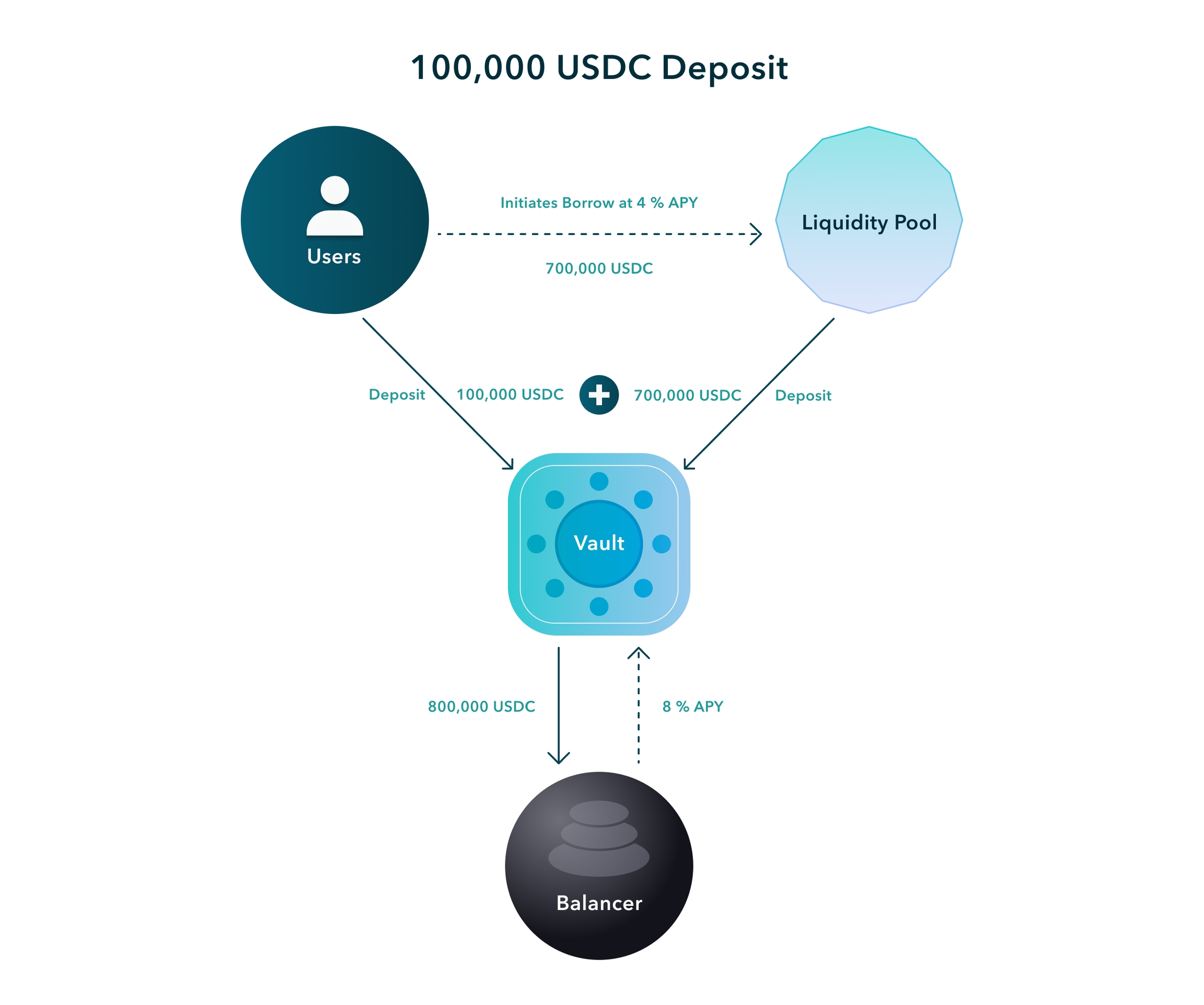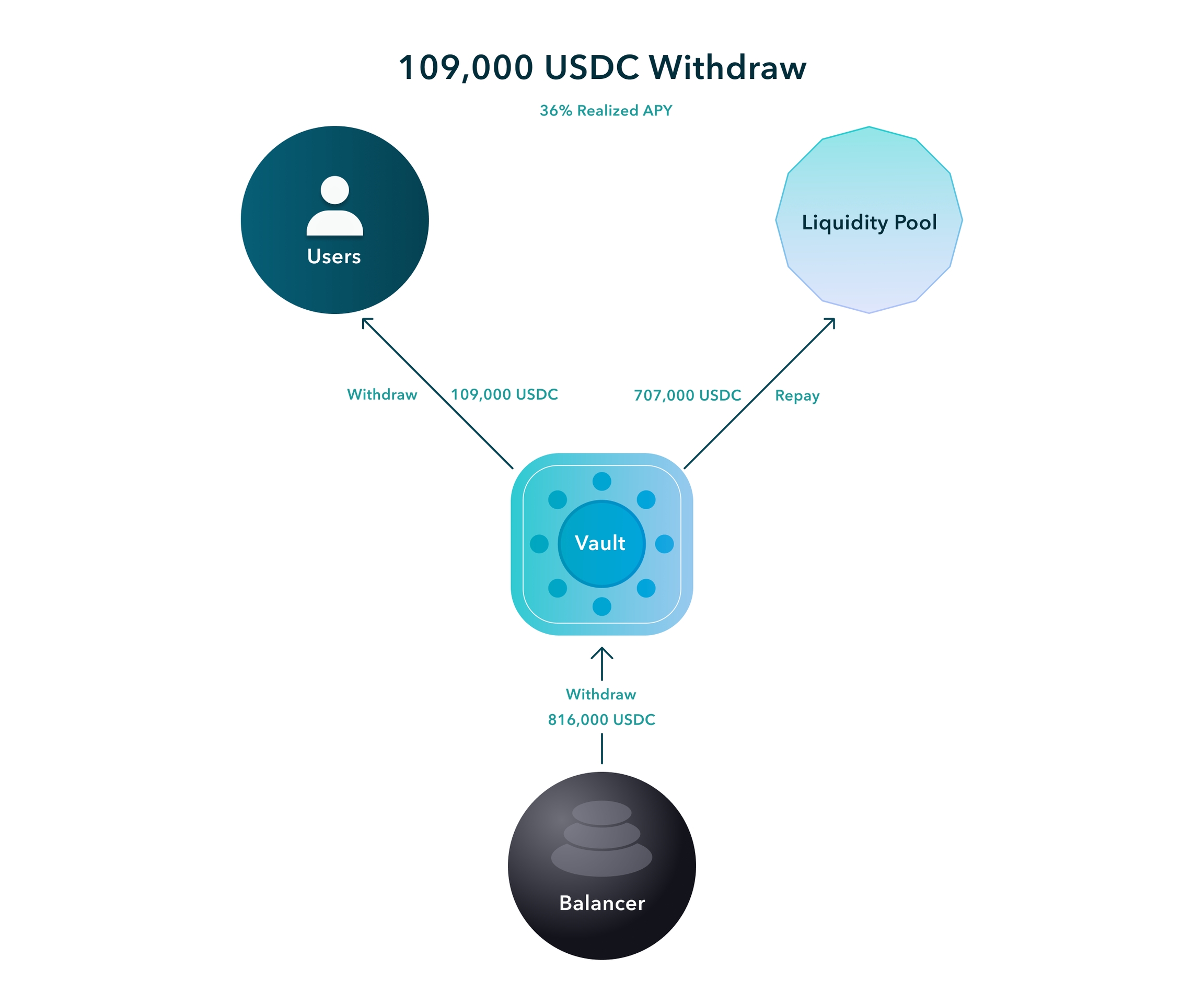Entering and Exiting a Vault
Entry
To enter a vault, a user will select the maturity that they want to borrow from, the amount they want to borrow, and the amount they want to deposit. Notional will take the user's deposit, borrow the extra cash from the specified liquidity pool, and deposit the total funds in the vault. The Notional vault controller will record the user's debt and their share of the assets in the vault.

Exit
Users can exit a vault at any time. Notional will redeem the user's vault shares, pay off their debt by lending to the specified liquidity pool at the current market rate, and return the excess capital to the user.

If the user borrows at a fixed rate, their debt will be converted to a variable rate at maturity and their position will stay open.
Rolling your position
Users can convert variable rate leveraged vault positions to fixed rate vault positions or vice versa (or even from fixed rates in one maturity to fixed rates in another maturity). The only difference a user experiences when rolling a levered vault debt compared to a normal debt is that the user must roll their entire debt in one transaction - users can't roll a strategy vault position over multiple transactions.
Last updated